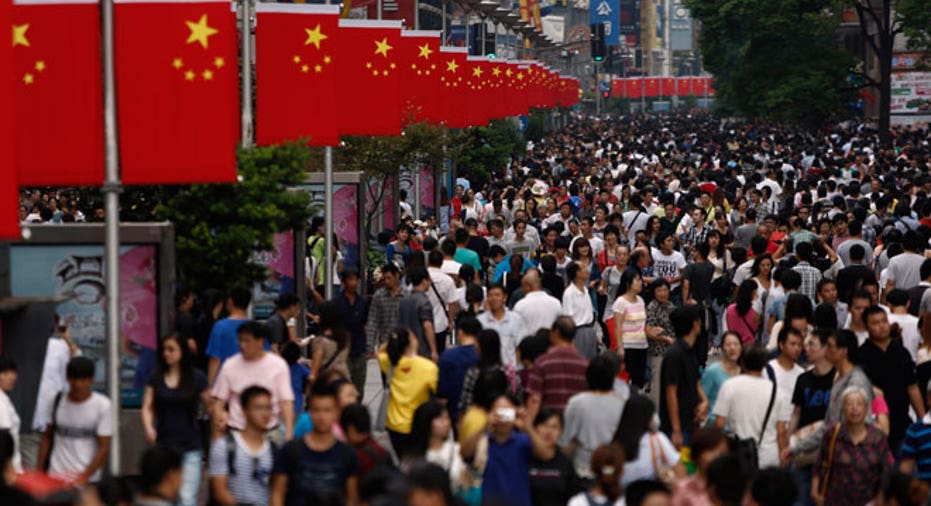Shedding Light on China's Shadow Banking Industry

It’s hard to blame global investors for losing sleep over what lies beneath China’s $7.5 trillion shadow banking industry. The anxiety makes sense given the lack of transparency in China and the still-lingering scars caused by the 2008 financial meltdown.
But worries that China’s shadow banking system could spark a new global financial crisis may be overblown.
A recent JPMorgan Chase (NYSE:JPM) analysis shows that China's shadow banks account for the equivalent of just 30% of the country's total bank assets (that is, deposit-taking institutions), which is pretty reasonable compared with 170% in the U.S. and 150% in the Netherlands. China’s shadow banks are also mostly domestically owned, lowering the risk of contagion, and Beijing’s low level of public-sector debt leaves plenty of room for bailouts.
“The chances that a potential Chinese financial crisis in the future will become such a global systemic event seem low,” JPMorgan analysts wrote in the January 31 report.
Fears about China’s rapidly-expanding shadow banking system escalated last month over the near-implosion and eventual bailout of a $469 million trust that has the odd name of “Credit Equals Gold #1.”
Unregulated Financial Players
While China avoided a potential crisis of confidence by making whole investors in the wealth-management product (WMP), some observers worry the rescue will further inflate China’s shadow banking bubble by fueling moral hazard.
So what exactly are shadow banks? These financial players create credit, but are not subject to the same regulatory scrutiny of traditional lenders. Examples of shadow banks include money market funds, broker dealers and even hedge funds.
“I don’t see it as the biggest risk in the world economy today, but it is part of the overall China risk for the world economy."
By definition, investors have less information about shadow banks than conventional financial entities. But that information gap is even wider in China, where investors must deal with a general lack of transparency that has fueled mistrust over the accuracy of official government reports.
“In China in particular, one doesn’t really know how big the shadow banking system is,” said Edwin Truman, a senior fellow at the Peterson Institute for International Economics and former U.S. Treasury and Federal Reserve official.
JPMorgan pegs the current size of China’s shadow banking system at about 46 trillion Chinese Yuan, or roughly $7.5 trillion.
That number has ramped up dramatically in recent years as Chinese households have diversified away from low-yielding bank deposits and thanks to a wave of deregulation that has encouraged competition from non-banks.
“Rapid” growth is “often a signal for financial difficulties because people get sloppy and supervision almost by definition is limited,” said Truman.
Smaller Than Mexico’s Shadow Banks
However, JPMorgan said China's shadow banking system is "relatively small" compared with those in other countries. Its size of 30% of total bank assets is well below the average among 20 countries of 50% at the end of 2012. At 170% of bank assets, the U.S. had the largest shadow banking system, while South Africa and Mexico led the way among emerging market countries at 66% and 56%, respectively.
In addition to having a manageable size, JPMorgan said China’s shadow banking system is “simpler” and more domestically owned than more advanced developed market jurisdictions. Foreign ownership of shadow banking products is “extremely small in China” compared with the U.S. or other countries, the firm said.
“Low foreign ownership not only makes a potential Chinese financial crisis less contagious to the rest of world but also protects China from bouts of global risk aversion and foreign investor withdrawal,” JPMorgan wrote.
Still, it is clear that China’s banking system has seen explosive growth that worries some. JPMorgan calculates that private non-financial sector growth surged to 180% of gross domestic product in 2013 from 110% in 2008. The firm said that is above most emerging market economies, but below many advanced Asian economies and lower than many developed economies like Spain, Canada and the U.K.
Balance Sheet Flexibility
China’s low level of public sector debt should give the country significant flexibility to clean up a potential banking crisis with public funds. According to the IMF, China’s gross government debt totaled 26% of GDP in 2012, compared with 102.7% in the U.S. China also has $3.7 trillion in foreign exchange reserves, the most in the world.
“They have plenty of political and financial resources,” Truman said.
The 2008 financial crisis demonstrated how one really sick interconnected bank like Lehman Brothers can quickly infect the rest of the system. However, Bank of International Settlements data for 2013 show that foreign banks around the world owned just $660 billion of Chinese bank assets, compared with $5.5 trillion of foreign claims on U.S. banks.
“The chances that a potential Chinese financial crisis in the future will become such a global systemic event seem low under this metric,” JPMorgan wrote.
Of course, while China may not spark a Second Lehman any time soon, a collapse of its banking system would undoubtedly cause serious economic headaches for the rest of the world.
In fact, it’s easy to see how a serious slowdown in China would ripple across the world as multinational companies grapple with a loss of a key source of revenue.
“I don’t see it as the biggest risk in the world economy today, but it is part of the overall China risk for the world economy,” said Truman.



















